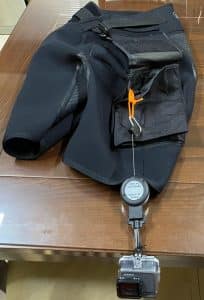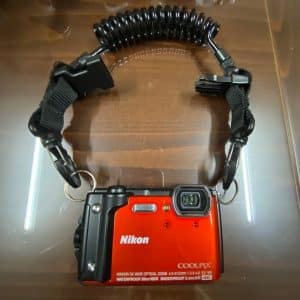Diving and Jellyfish in Cyprus
Jellyfish are not normally considered a hazard in Cyprus waters but getting stung by one is something you want to avoid during your dive.
The Department of Fisheries and Marine Research recorded the existence of the jellyfish species Cassiopea, Carybdea, Chrysaora, Rhopilema, Pelagia Noctiluca and Aurelia Aurita in Cyprus waters during the last decade. Some of these jellyfish may sting but none of them will cause serious bodily harm according to evidence.

In June 2019 and May 2020, there was a prolific occurrence of Pelagia Noctiluca (also known as the Mauve Stinger) on the Northwestern coast of Cyprus, which is a transient phenomenon. The Mauve Stinger can be present from a few hours to a few days.

The Department called the public to be careful and avoid swimming in those areas. Pelagia Noctiluca is covered in stinging cells, both at its tentacles and at the bell which is unusual for a jellyfish. Its sting causes pain that typically lasts one to two weeks. Symptoms vary and include local redness, swelling and a rash. However, it is generally not dangerous and there are no known fatalities.
On one of my dive trips to Konos Point (Cyclops Cave) Cyprus, at the time of the reported swarm, I knew there were some jellyfish around at the entry point. I thought these could easily be avoided once in the water and could just crack on with the dive. It was particularly hot that day so I was wearing a shorty exposure suit. Once in the water, I quickly realized that it was a jellyfish soup of Mauve Stingers and about 2 to every cubic foot of water. We quickly descended to get into open water where there would be fewer of them but I got stung 3 times on the legs as I progressed to deeper water.
It was a steady burning sensation which got worse as the dive progressed with a visible swelling and reddening of the skin. On exiting, the area of skin continued to show these signs for about 2 weeks as well as pain for the next couple of days and left a permanent scar (see picture) although I am tempted to tell other divers it was from a bull shark injury! The best preventative action I could have taken that day was a full exposure suit and protective sunscreen that prevent stings on the face and hands.

In case of a sting, the Department of Fisheries and Marine Research advises the following:
- Rinse thoroughly with sea water, but do not rub the affected area. DO NOT use fresh water.
- Remove any tentacle residue using a plastic card, a piece of wood or a pair of tweezers. NEVER with bare hands, as this will lead to the tentacles sticking to the hands.
- Apply some cortisone cream to the sting area.
- Inform the lifeguards, if any, in the area to take the necessary action.
- Acute pain usually lasts 15-20 minutes. However, if the pain persists, consult a doctor.
- In case of an allergic person, this person should contact or go to a doctor or hospital immediately.
While the Department of Fisheries are investigating the causes of these swarms, they focus on various possibilities. Increasing sea water temperature, eutrophication (pollution caused by excessive nutrient elements such as phosphorus and nitrogen) are among these possibilities. Increases in the sea water temperature and nutrient elements such as phosphorus and nitrogen also increases the number of plankton in sea water. Plankton is also the food of jellyfish and thus their number increases. As you might remember from BLOG number 5, the Mediterranean is low on phosphorus, nitrogen and hence plankton so it is confusing about the size of the swarms in Cyprus.
The good news is sea turtles relish the taste of Jellyfish especially the Mauve Stinger and the Upside Down jellyfish (Cassiopea) so where there is jellyfish in Cyprus you have a good chance of seeing our friend the sea turtle. So slap on the protective sun screen, squeeze into your full exposure suit and get amongst the jellyfish swarms for great photo opportunities. Feel free to give DIVERS FIRST a call for further information. Enjoy your diving!
Diving and Jellyfish in Cyprus Read More »






